For JLR technicians and workshop owners, moving beyond standard fault code reading into the realm of advanced module programming and CCF (Car Configuration File) editing requires specialized, engineering-level tools. The JLR Pathfinder offline diagnosis software represents this critical step up, providing the deep-level vehicle access necessary for complex diagnostics, feature activation, and OEM retrofits. A common and frustrating problem, such as a mismatched CCF after a module replacement that causes a host of unpredictable errors, is precisely what this toolset is designed to solve. This article provides a technical breakdown of the JLR Pathfinder system for professional use.
Technical Overview of the JLR Pathfinder System
It is crucial to understand that JLR Pathfinder is not a single application but an integrated offline diagnostic and programming environment. It is the offline counterpart to the cloud-based TOPIx (TOPIX cloud) system, designed for use in workshops where a constant, high-bandwidth internet connection may be unreliable or undesirable for critical programming tasks.
Core Components and Architecture
The system operates by hosting a local server on a dedicated PC, which contains the vehicle diagnostic databases, software files, and CCF data. This local server communicates with a DOIP (Diagnostics over Internet Protocol)-enabled VCI (Vehicle Communication Interface), which in turn interfaces with the vehicle’s various control modules. This architecture ensures that sensitive programming operations are not interrupted by network outages, providing a stable and secure environment for critical procedures.
A Hypothetical Step-by-Step Process for CCF Editing
While exact procedures vary by vehicle and task, a typical workflow for editing a CCF to enable a feature like a rear view camera post-retrofit would involve:
- Vehicle Preparation: Connect a stable power supply to the vehicle to prevent voltage drops during programming. Connect the DOIP VCI to the vehicle’s OBD port and to the PC running Pathfinder.
- Initial Vehicle Identification: Launch the Pathfinder software and identify the vehicle via its VIN. The system will download the specific “golden” CCF from its local database.
- Reading the As-Built Data: Perform a full vehicle network scan and read the current configuration from the target module (e.g., the CJB or Head Unit).
- Editing the CCF: Using the engineering-level menus, locate the specific parameters related to the desired feature (e.g., `Camera = Enabled`). Modify the value and validate the change against the system’s database.
- Programming and Validation: Write the modified CCF back to the vehicle module. Perform a module reset and conduct a full diagnostic scan to confirm the change was accepted and no fault codes are present.
Essential Tools for JLR Pathfinder Operation
To operate the JLR Pathfinder offline diagnosis software effectively, a technician must have the correct hardware and software suite:
- A JLR-Approved DOIP VCI: A generic OBD dongle is insufficient. A dedicated JLR VCI (such as the Jaguar Land Rover-approved tool) that supports the high-speed DOIP protocol is mandatory for reliable communication.
- A Stable Power Supply: A professional-grade 30-40A power supply connected to the vehicle’s battery is non-negotiable. Module programming is voltage-sensitive, and any dip can brick a control unit.
- Dedicated High-Performance Laptop: The local server software is resource-intensive. A modern laptop with an SSD, ample RAM, and a stable Windows 10/11 OS is required.
- The Software Itself: This includes the Pathfinder application and the associated vehicle data packs, which must be legally sourced and licensed. For a reliable and complete solution, technicians often turn to specialized providers.
A robust and verified package containing the necessary software and installation support can be found at TOPIX Cloud’s JLR Pathfinder Offline offering.
Common Challenges and Expert Solutions
Even experienced technicians can encounter issues:
- “Configuration Incompatible” Errors: Often caused by using an outdated data pack. Ensure your local Pathfinder database is regularly updated to the latest version to match current vehicle software.
- VCI Communication Failures: Frequently a result of incorrect network adapter settings on the host PC. The VCI and Pathfinder software must be on the same subnet. Disabling all other network adapters (Wi-Fi, Bluetooth) during programming is a best practice.
- Programming Interruptions: Almost always related to voltage instability. Double-check the connection of the external power supply and ensure it is set to the correct voltage and amperage before starting the session.
Devices Required for JLR Pathfinder Offline
To work effectively with the JLR Pathfinder offline diagnosis software, you will need a specific set of hardware. The core component is a JLR-approved DOIP VCI for reliable, high-speed communication. A professional-grade stable power supply is mandatory to safeguard against voltage drops during critical programming cycles. Finally, a dedicated, high-performance Windows-based laptop is required to host the local server software efficiently. For a complete and ready-to-use software package, consider the solution offered at TOPIX Cloud.
Frequently Asked Questions (FAQ)
Is JLR Pathfinder the same as SDD or JEDI?
No. SDD (Symptom Driven Diagnostics) and its successor, JEDI (Jaguar Elite Diagnostics), are dealer-level tools. Pathfinder is an engineering-level tool (often referred to as JET – JLR Engineering Tool) that provides deeper access for CCF editing and advanced programming tasks beyond standard diagnostics.
Can I use any DOIP-compatible interface with Pathfinder?
While some third-party interfaces may claim compatibility, for guaranteed stability and to avoid the risk of bricking vehicle modules, using a JLR-approved VCI is strongly recommended and often required by the software for full functionality.
Why would I need the offline version when TOPIx is cloud-based?
The offline version is critical for workshops with unstable internet or for performing sensitive, long-duration programming tasks where a network dropout could have catastrophic results. It provides a controlled, reliable environment independent of external connectivity.
Conclusion
The JLR Pathfinder offline diagnosis software is an indispensable tool for any serious JLR specialist workshop. It provides the engineering-level access required to resolve complex configuration issues, perform legitimate OEM retrofits, and conduct advanced module programming. Success hinges on using the correct DOIP VCI, maintaining stable power, and possessing a deep understanding of JLR’s CCF architecture. For technicians looking to elevate their diagnostic capabilities, mastering Pathfinder is a necessary and rewarding investment.
For reliable access to the necessary tools, software, and expert support for complex JLR diagnostic programming and JLR OEM retrofits upgrade tasks, we recommend checking out the comprehensive resources and services available at jlrupgrades.com.










